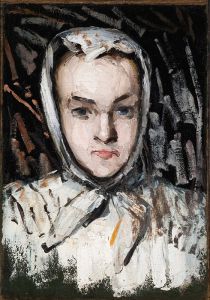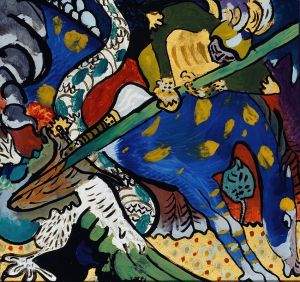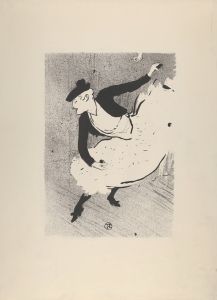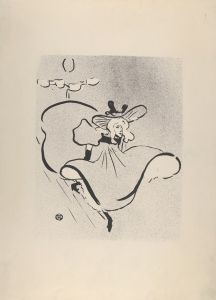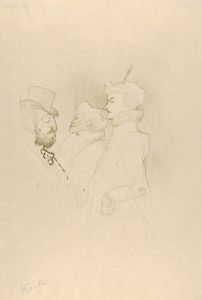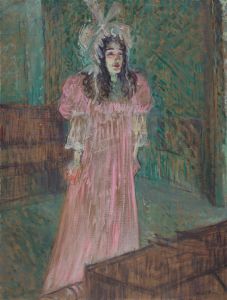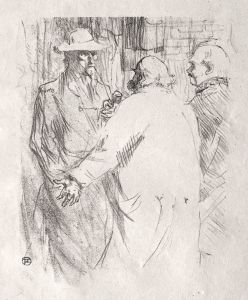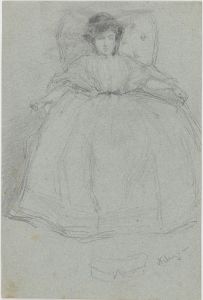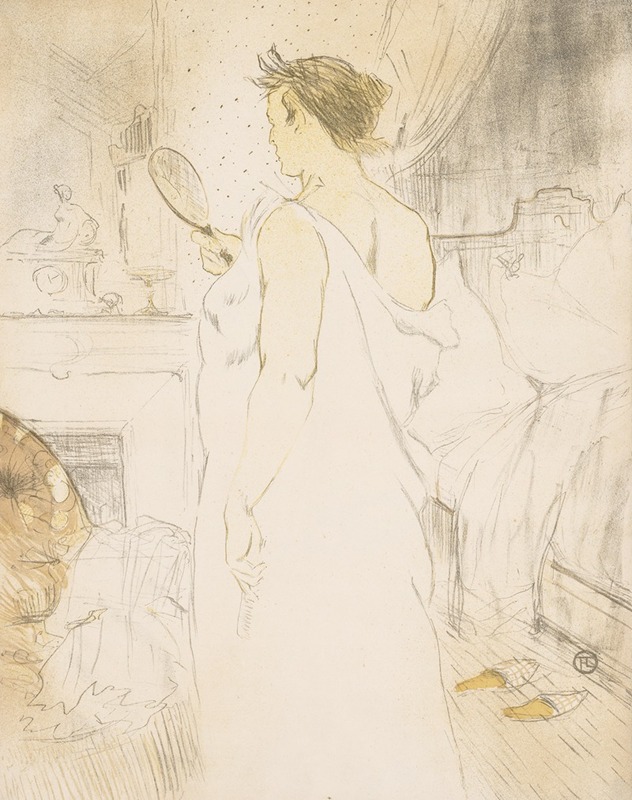
Elles: Woman with a Hand Mirror
A hand-painted replica of Henri de Toulouse-Lautrec’s masterpiece Elles: Woman with a Hand Mirror, meticulously crafted by professional artists to capture the true essence of the original. Each piece is created with museum-quality canvas and rare mineral pigments, carefully painted by experienced artists with delicate brushstrokes and rich, layered colors to perfectly recreate the texture of the original artwork. Unlike machine-printed reproductions, this hand-painted version brings the painting to life, infused with the artist’s emotions and skill in every stroke. Whether for personal collection or home decoration, it instantly elevates the artistic atmosphere of any space.
Henri de Toulouse-Lautrec, a prominent French painter and illustrator, is renowned for his depictions of Parisian nightlife in the late 19th century. Among his notable works is "Elles: Woman with a Hand Mirror," a piece that is part of a series titled "Elles," created in 1896. This series offers an intimate glimpse into the private lives of women, particularly those residing in brothels, a subject that Toulouse-Lautrec approached with empathy and a keen observational eye.
"Elles: Woman with a Hand Mirror" is a lithograph, a medium that Toulouse-Lautrec frequently employed to capture the nuances of his subjects with both immediacy and subtlety. The series "Elles" consists of a collection of lithographs that portray women in their everyday environments, often engaged in mundane activities. This particular piece features a woman gazing into a hand mirror, a moment of personal reflection and introspection. The composition is notable for its simplicity and the quiet dignity it affords its subject, a characteristic feature of Toulouse-Lautrec's work.
Toulouse-Lautrec's approach to the "Elles" series was groundbreaking for its time. Rather than sensationalizing or romanticizing the lives of these women, he presented them with a sense of realism and respect. His work diverged from the typical portrayals of women in the 19th century, which often objectified or idealized them. Instead, Toulouse-Lautrec's depictions are marked by a sense of authenticity and humanity, offering a rare glimpse into the lives of women who were often marginalized by society.
The "Elles" series, including "Woman with a Hand Mirror," reflects Toulouse-Lautrec's broader artistic style, characterized by bold lines, expressive forms, and a keen attention to detail. His use of color and line work in lithography allowed him to convey the textures and emotions of his subjects with remarkable clarity. The muted palette and soft lines in "Woman with a Hand Mirror" contribute to the intimate and contemplative atmosphere of the piece.
Toulouse-Lautrec's work was heavily influenced by the Impressionists, as well as by Japanese ukiyo-e prints, which were popular in Europe at the time. These influences are evident in his compositional techniques and his focus on capturing fleeting moments of everyday life. His ability to blend these influences with his unique perspective resulted in a body of work that remains influential and celebrated to this day.
"Elles: Woman with a Hand Mirror" is housed in various collections and continues to be studied and appreciated for its artistic and historical significance. Toulouse-Lautrec's empathetic portrayal of women in the "Elles" series challenges viewers to reconsider the narratives surrounding these individuals and invites a deeper understanding of their lives and experiences.
Overall, "Elles: Woman with a Hand Mirror" exemplifies Henri de Toulouse-Lautrec's mastery of lithography and his compassionate approach to his subjects. Through this work, he offers a poignant commentary on the lives of women in the late 19th century, capturing their complexity and individuality with grace and sensitivity.








